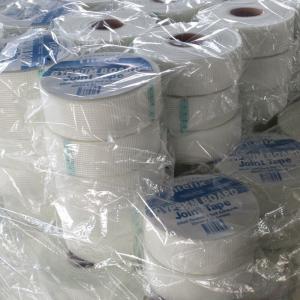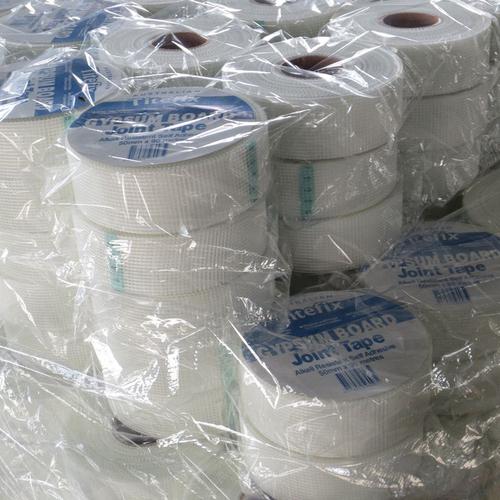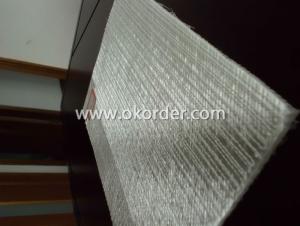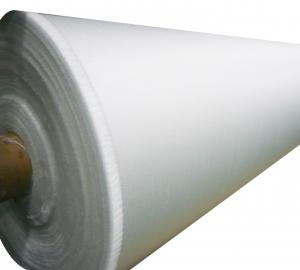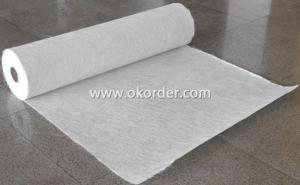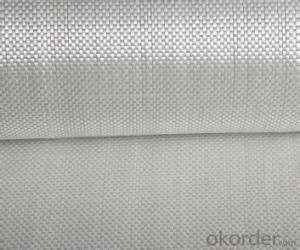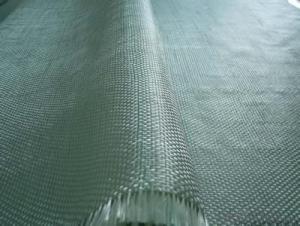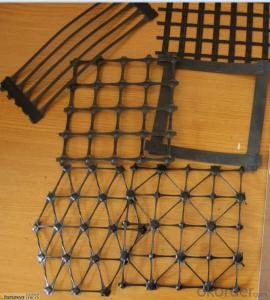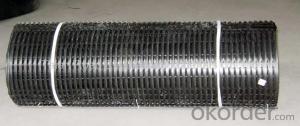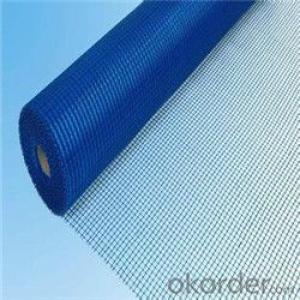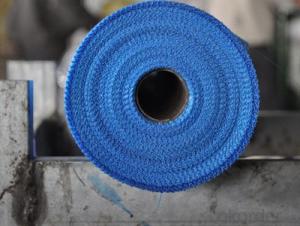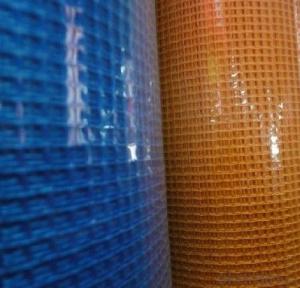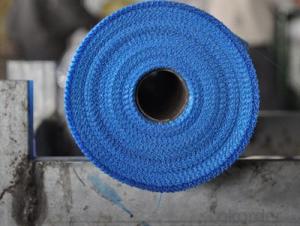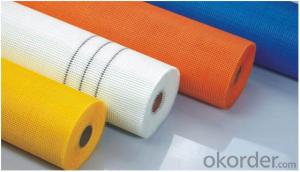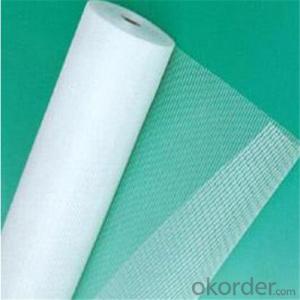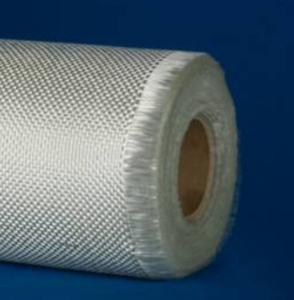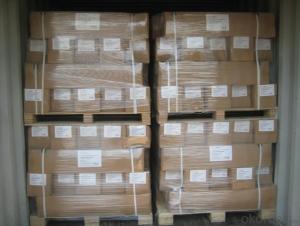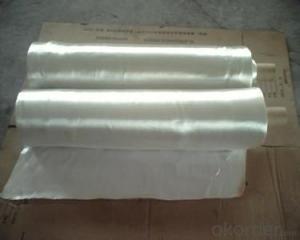High Temp Fiberglass Fabric Mesh Cloth Roll
- Loading Port:
- Qingdao
- Payment Terms:
- TT OR LC
- Min Order Qty:
- -
- Supply Capability:
- 1000000 m²/month
OKorder Service Pledge
OKorder Financial Service
You Might Also Like
Specifications
Alkali-resistant wall reinforced Fiberglass Mesh fiberglass manufacturer
Pass CE &ISO 9001
width can be 200cm
Firm mesh
The grid component
Fiberglass mesh is based on glass fiber woven fabric as substrate, the macromolecular
anti emulsion coating. It has good alkali resistance, flexibility and latitude to the high tensile
strength, with its good chemical stability, high strength, light weight, good dimensional
stability, strong impact resistance, pest control, fire protection, thermal insulation and
other features, welcomed by the user .
Use the grid cloth
Its widely used in: 1, wall reinforcing material; 2, reinforced cement products; 3, internal and
external wall insulation, 4, granite, marble, mosaic special mesh back paste network;
5, waterproof cloth, asphalt roofing; 6, reinforcing materials of plastics, rubber products;
7, fire board; 8, the grinding wheel base; 9, highway pavement with geogrid; 10, building
sealing tape etc.
- Q: Can fiberglass fabric be used for insulation in aerospace applications?
- Yes, fiberglass fabric can be used for insulation in aerospace applications. It is a common choice due to its excellent thermal resistance, lightweight nature, and resistance to high temperatures. Additionally, fiberglass fabric provides good sound insulation, making it suitable for aerospace environments.
- Q: Is fiberglass fabric resistant to chemicals in water treatment facilities?
- Yes, fiberglass fabric is generally resistant to chemicals in water treatment facilities. It has excellent resistance to a wide range of chemicals, including acids, alkalis, and solvents, making it a suitable choice for various applications in water treatment facilities.
- Q: Are fiberglass fabrics resistant to shrinkage or stretching?
- Fiberglass fabrics possess remarkable resistance against shrinkage and stretching, owing to the inherent qualities of fiberglass such as its impressive tensile strength and minimal elasticity. As a result, these fabrics prove highly resilient to both shrinkage and stretching, making them ideal for situations where dimensional stability is crucial. This includes their application in the production of industrial products, insulation materials, and composite materials. Moreover, due to their durability and resistance against shrinkage and stretching, fiberglass fabrics are well-suited for usage in high-temperature environments and adverse conditions. In conclusion, fiberglass fabrics provide outstanding stability and retain their shape and size even when subjected to diverse external forces.
- Q: Can fiberglass fabric be laminated with other materials?
- Yes, fiberglass fabric can be laminated with other materials. Lamination involves bonding or layering different materials together, and fiberglass fabric is often used as a reinforcing layer in composite laminates. It can be combined with various materials such as resins, foams, or metals to enhance strength, durability, or other desired properties in the final product.
- Q: How is fiberglass fabric dyed or colored?
- There are several methods available for dyeing or coloring fiberglass fabric. One popular technique is solution dyeing, where the color is incorporated into the raw materials prior to fiber spinning. This ensures that the color is evenly distributed throughout the fabric and remains resistant to fading or washing out. Another approach is to apply the color to the fabric after it has been woven or knitted. This can be achieved through piece dyeing, where the entire fabric is submerged in a dye bath and subsequently washed and dried. Alternatively, a printing technique can be employed to transfer a design or pattern onto the fabric using colored inks. In certain instances, fiberglass fabric can be colored through a post-treatment process. This involves the application of a color coating or pigment onto the fabric's surface. This not only enhances its appearance but also offers added protection against environmental factors like UV rays. It is important to consider various factors when selecting a dyeing or coloring method for fiberglass fabric. These factors include the desired color, fabric type, and intended application. Moreover, the compatibility and resistance of dyes or pigments to chemicals or heat should also be taken into account. Therefore, consulting with experts or manufacturers is crucial in determining the most suitable coloring method for a specific fiberglass fabric project.
- Q: Does fiberglass fabric have any health hazards?
- Fiberglass fabric can pose health hazards if proper safety precautions are not taken during handling and installation. The tiny fibers can become airborne and easily inhaled, leading to respiratory issues and irritation. However, if appropriate safety measures such as wearing protective clothing and using respiratory protection are followed, the health risks associated with fiberglass fabric can be minimized.
- Q: How does fiberglass fabric perform in terms of sound absorption?
- Known for its exceptional sound absorption properties, fiberglass fabric is widely acknowledged. Its unique composition and structure enable it to effectively soak up sound waves, thereby diminishing echoes and reverberations within a designated area. By virtue of its density and porous nature, the fabric can trap and dissipate sound energy, preventing its rebound into the room. Consequently, fiberglass fabric has become a favored option for soundproofing needs across various industries, including recording studios, theaters, and commercial buildings. Furthermore, it finds utility in wall panels, acoustic curtains, and other sound-absorbing products, augmenting the overall acoustic performance of a space. In summary, fiberglass fabric is highly esteemed for its sound absorption capabilities, contributing to enhanced sound quality and decreased noise levels in any given environment.
- Q: What are the advantages of using fiberglass fabrics?
- Using fiberglass fabrics in various industries offers several advantages. Firstly, fiberglass fabrics are renowned for their exceptional strength-to-weight ratio. This implies that they possess remarkable strength and durability while maintaining a lightweight composition. Consequently, fiberglass fabrics prove to be ideal for industries that prioritize both strength and weight, such as aerospace and automotive sectors. Secondly, fiberglass fabrics exhibit superb thermal insulation properties. They display remarkable resistance to heat and can endure high temperatures without sacrificing their structural integrity. As a result, they are suitable for applications necessitating heat resistance, including insulation materials and the construction of fire-resistant structures. Another advantage of fiberglass fabrics lies in their resistance to chemicals and corrosion. They demonstrate high resistance to various chemicals, acids, and alkalis, rendering them perfect for environments where exposure to corrosive substances is commonplace, like chemical processing plants or marine applications. Moreover, fiberglass fabrics offer high flexibility and can be effortlessly molded into diverse shapes and forms. This versatility allows for a wide range of applications, ranging from reinforcement materials in composites to the creation of intricate structures in architectural design. Furthermore, fiberglass fabrics are non-conductive and boast excellent electrical insulation properties. Consequently, they are well-suited for electrical applications that require insulation to prevent electric shocks or short circuits. Lastly, fiberglass fabrics are relatively cost-effective compared to other high-performance materials like carbon fiber. They deliver similar properties at a more affordable price, making them a popular choice in industries that prioritize cost-effectiveness. In conclusion, the benefits of utilizing fiberglass fabrics include their impressive strength-to-weight ratio, thermal insulation properties, resistance to chemicals and corrosion, flexibility, electrical insulation properties, and cost-effectiveness. These attributes make fiberglass fabrics a versatile and dependable material for a wide range of applications in various industries.
- Q: How is fiberglass fabric bonded to other materials?
- Fiberglass fabric can be bonded to other materials using various methods and adhesives. One common technique is using epoxy resin, which provides a strong and durable bond. The process involves applying a layer of epoxy resin onto the surface of the material to be bonded, then placing the fiberglass fabric on top of the resin. Pressure is then applied to ensure proper adhesion and to eliminate any air bubbles. The epoxy resin is left to cure, usually for several hours or overnight, creating a strong bond between the fiberglass fabric and the material. Another method is using adhesive films or tapes specifically formulated for bonding fiberglass fabric. These adhesive films are often heat-activated, meaning they require the application of heat to achieve proper bonding. The process typically involves placing the adhesive film between the fiberglass fabric and the material to be bonded, then applying heat using a heat gun or other suitable equipment. As the adhesive film melts, it creates a bond between the fiberglass fabric and the material. In some cases, mechanical fasteners such as screws, rivets, or staples may be used to secure the fiberglass fabric to other materials. This method is often employed when a temporary or removable bond is desired, or when additional strength and stability are required. It is important to note that the specific bonding method used may depend on the intended application and the materials involved. Consulting with a professional or following manufacturer's guidelines is recommended to ensure proper bonding and optimal results.
- Q: Is fiberglass fabric suitable for use in food packaging?
- Fiberglass fabric is not a suitable option for food packaging, as it can potentially contaminate the food due to the tiny glass fibers that it is composed of. Ingesting these fibers may pose health risks. Furthermore, it is essential to note that fiberglass fabric is not intended to be used for food contact and may not meet the required standards for packaging materials. To guarantee the safety and quality of the packaged food, it is crucial to select packaging materials that are explicitly designed and approved for food contact.
Send your message to us
High Temp Fiberglass Fabric Mesh Cloth Roll
- Loading Port:
- Qingdao
- Payment Terms:
- TT OR LC
- Min Order Qty:
- -
- Supply Capability:
- 1000000 m²/month
OKorder Service Pledge
OKorder Financial Service
Similar products
Hot products
Hot Searches
Related keywords
